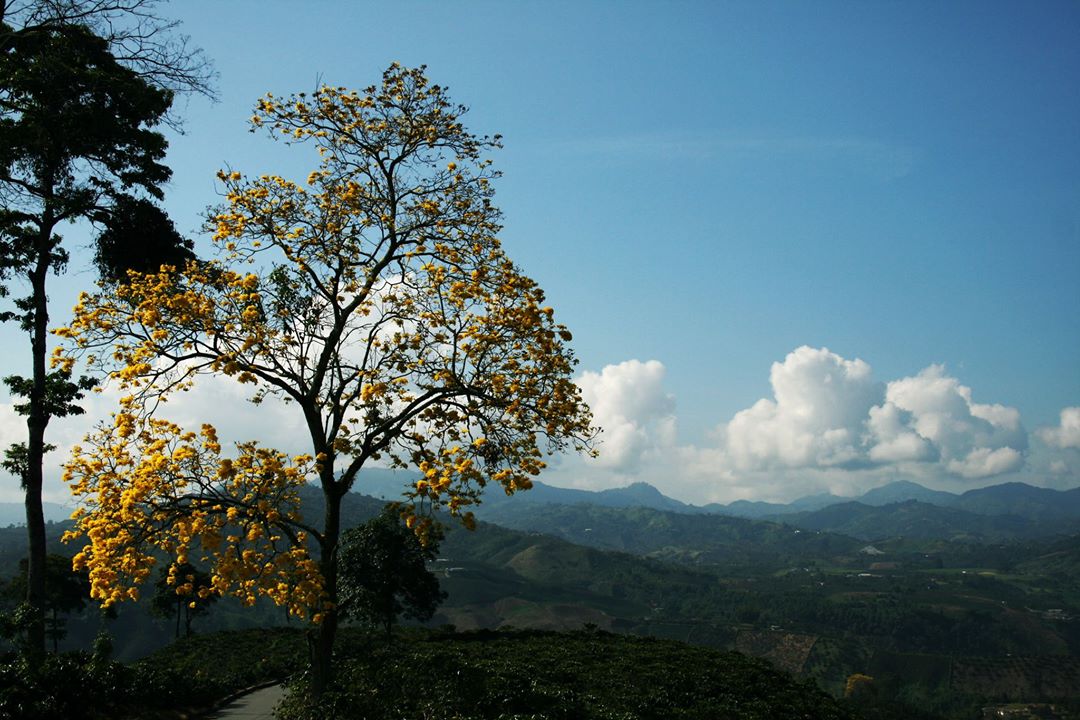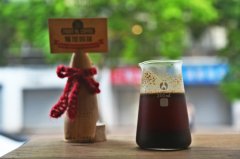Colombian Villa Clara Korola Coffee Manor details how to grow Colombian coffee.

Professional coffee knowledge exchange more coffee bean information please follow the coffee workshop (Wechat official account cafe_style)
How is the unique VillaClara coffee shaped?
Black moist ash soil | Columbia Andes above 1450 m above sea level | Acid ash soil | medium size of soil crystals | thick soil layer with high light transmittance and high water storage capacity more than 100cm | rich in phosphate and other organic elements | moderate concentration of potassium, calcium and magnesium
Black moist ash soil is a natural acidic soil, coupled with its medium crystal particles, good water storage / drainage. The altitude above 1450 meters brings the right amount of Rain Water and temperature difference, and the natural geographical weather conditions allow Krara Coffee to adjust the nutrients in the soil in the most natural way (phosphate / potassium / calcium / magnesium). Growing Caturra and other Colombian coffees under such favorable conditions created Villa Clara Cafe!
Tips:
All are ash soil, the left one is jet black moist ash soil (melanudands).
1. Ash soil (Andisols): the soil is soft, light, with a lot of organic matter, mostly small aggregates, and the ability to preserve fertilizer and water is super strong, but it is easy to be eroded, and the soil is easy to lack phosphate fertilizer. But in the VC Coffee Manor, there is a layer of ash soil more than 100cm thick and rich in phosphate.
two。 Potash fertilizer is generally high demand for fruit, and mainly in the fruit, however, too much potassium and nitrogen, will reduce the quality of coffee. Calcium has a wide range of mechanisms, and calcium fertilizer is very important for the growth of coffee seedlings. However, too high concentration of calcium and phosphorus will make coffee prone to bitterness and stiffness (hard taste). While magnesium is related to photosynthesis, there is magnesium in the chemical structure of chlorophyll (photosynthesis means that plants use light energy to absorb water from the roots from the soil and carbon dioxide absorbed by leaves from the air. Chloroplast factories in leaves synthesize sugars such as glucose, sucrose and starch, that is, so-called plant food).
Interestingly, too much or too little of these organic elements (phosphate / potassium / calcium / magnesium) can lead to a reduction in coffee production. It is not good to have too many soil elements. Not too much, not too little is the best!
P.s. As for how to know the composition of the soil, I have the opportunity to share it with you again.
How to grow and handle VillaClara coffee?
We plant each coffee seedling by hand and carefully control the planting density of coffee trees to ensure the health of coffee trees. The planting density of Kerala Coffee Manor ranges from 8000 to 10000 trees per hectare.
When it comes to the harvest season, we harvest it manually, wash it with water immediately after harvest, and then dry it naturally until the moisture content is 11% before bagging and storing.
Testing the flavor of Ke Lara coffee from the cup of origin
Aroma and flavor: fruit | caramel | peppermint | Nuts; aroma: 8gamble 10
Sipping flavor: chocolate | Vanilla; acidity: 8 stroke 10; Alcohol: 7.8 pound 10
-- > Clean | even | Rich tropical fruit aroma
Villa Clara (Korola) Coffee Farm report:
Harvest season:
Main (80%): 9Mui-November
Secondary (20%): 4muri-May
Annual output:
12000 bags (70 kg / bag)
Planting area:
28 ha (280000 square metres)
Important Notice :
前街咖啡 FrontStreet Coffee has moved to new addredd:
FrontStreet Coffee Address: 315,Donghua East Road,GuangZhou
Tel:020 38364473
- Prev

Colombia Caldas Tapias Canyon Manor Laderas del Tapias Coffee Manor Information
Professional coffee knowledge exchange more coffee bean information please follow the coffee workshop (Wechat official account cafe_style) Colombian coffee cultivation broken century Laderas del Tapias (Tapias Manor / Cooperative) Sun beans Laderas del Tapias Tapias Manor:-Caldas Caldas Province-altitude 1400-1950 M Micro Red
- Next

Information about St. Augustine Coffee producing area, Huilan Province, Colombia Los Lagos Coffee
For more information on coffee beans, please follow the Coffee Workshop (official Wechat account cafe_style). In the Andes, which is 1500 meters above sea level, there is a coffee-growing area listed by UNESCO (The United Nations Educational, Scientific and Cultural Organization;) as a world common heritage.
Related
- Detailed explanation of Jadeite planting Land in Panamanian Jadeite Manor introduction to the grading system of Jadeite competitive bidding, Red bid, Green bid and Rose Summer
- Story of Coffee planting in Brenka region of Costa Rica Stonehenge Manor anaerobic heavy honey treatment of flavor mouth
- What's on the barrel of Blue Mountain Coffee beans?
- Can American coffee also pull flowers? How to use hot American style to pull out a good-looking pattern?
- Can you make a cold extract with coffee beans? What is the right proportion for cold-extracted coffee formula?
- Indonesian PWN Gold Mandrine Coffee Origin Features Flavor How to Chong? Mandolin coffee is American.
- A brief introduction to the flavor characteristics of Brazilian yellow bourbon coffee beans
- What is the effect of different water quality on the flavor of cold-extracted coffee? What kind of water is best for brewing coffee?
- Why do you think of Rose Summer whenever you mention Panamanian coffee?
- Introduction to the characteristics of authentic blue mountain coffee bean producing areas? What is the CIB Coffee Authority in Jamaica?

